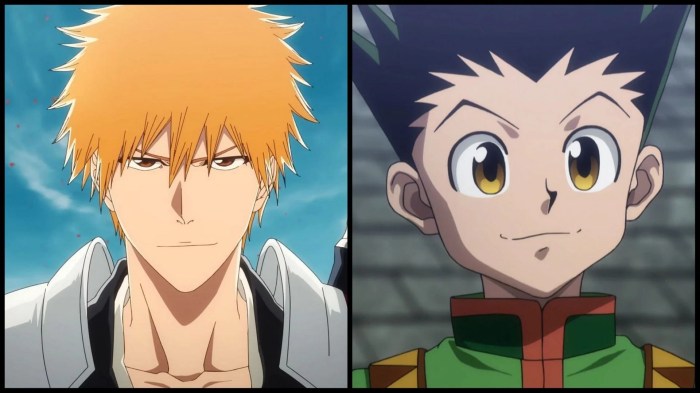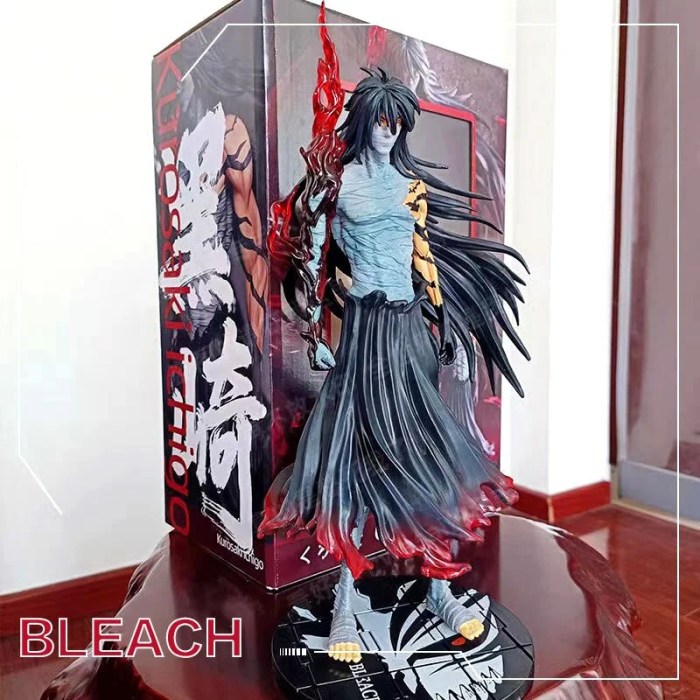The Themes and Concepts Explored in “Bleach”
“Bleach,” the popular manga and anime series created by Tite Kubo, delves into a world where the boundaries between the living and the dead are blurred. The story revolves around Ichigo Kurosaki, a seemingly ordinary high school student who gains the powers of a Soul Reaper, a protector of the human world from malevolent spirits. Through Ichigo’s journey, “Bleach” explores a range of profound themes, including the nature of death, the importance of destiny, and the complexities of good and evil.
Death and the Afterlife, Why is bleach anime manga called bleach
“Bleach” presents a unique perspective on death and the afterlife, where the human world coexists with the Soul Society, a realm inhabited by souls after their physical demise. The series challenges traditional notions of death by depicting it as a natural transition rather than an end. The Soul Reapers, who are tasked with guiding souls to the Soul Society, play a crucial role in maintaining balance between the living and the dead. Through Ichigo’s encounters with various souls, both benevolent and malevolent, the series explores the diverse experiences of death and the afterlife, highlighting the complexities of grief, loss, and the search for meaning in the face of mortality.
The Impact of “Bleach” on Popular Culture: Why Is Bleach Anime Manga Called Bleach
“Bleach” has left an indelible mark on the world of anime and manga, influencing countless works and inspiring a devoted fanbase worldwide. Its unique blend of action, supernatural elements, and compelling characters has resonated with audiences, making it a cultural phenomenon that continues to be celebrated today.
The Influence of “Bleach” on Other Anime and Manga Series
The impact of “Bleach” on other anime and manga series is undeniable. Its signature style, which combines high-octane action sequences with intricate world-building and complex character development, has inspired numerous creators.
- Many anime and manga series have adopted similar combat styles, incorporating fast-paced choreography, intricate swordsmanship, and supernatural abilities. For instance, the popular series “Naruto” and “One Piece” feature elaborate fighting styles that owe a debt to “Bleach’s” influence.
- “Bleach” has also influenced the way characters are designed, with many series adopting its distinct aesthetic of bold colors, detailed costumes, and expressive character designs. The popular series “Soul Eater” and “Fairy Tail” showcase this influence, featuring characters with unique appearances and powerful abilities.
- Moreover, “Bleach’s” complex world-building, featuring multiple factions, distinct societies, and intricate lore, has inspired creators to develop more elaborate and immersive universes in their own works. This influence can be seen in series like “Tokyo Ghoul” and “Attack on Titan,” which feature detailed world-building and intricate storylines.
The Popularity of “Bleach” in Different Countries
“Bleach” has enjoyed widespread popularity across the globe, particularly in Japan, the United States, and Europe.
- In Japan, “Bleach” became a cultural phenomenon, topping manga sales charts and garnering a massive fanbase. The anime adaptation further propelled its popularity, with its action-packed episodes and memorable characters resonating with viewers.
- In the United States, “Bleach” gained significant traction through its English dub, which aired on Cartoon Network’s Adult Swim. The series’ popularity in the US contributed to the growing interest in anime and manga among American audiences.
- Across Europe, “Bleach” has also enjoyed considerable success, with fans eagerly awaiting new releases and engaging in online communities dedicated to the series. Its popularity in Europe reflects the global appeal of “Bleach” and its ability to transcend cultural boundaries.
The Lasting Impact of “Bleach” on the World of Anime and Manga
“Bleach” has left a lasting legacy on the world of anime and manga, continuing to influence creators and inspire fans.
- The series’ popularity has contributed to the mainstream acceptance of anime and manga, opening doors for other series to reach wider audiences. “Bleach” has also helped to diversify the genres of anime and manga, showcasing the potential of action-adventure stories with supernatural elements.
- “Bleach” has also been credited with popularizing the concept of “shonen” anime, a genre that focuses on action, adventure, and coming-of-age stories. Its success has inspired numerous shonen series, such as “My Hero Academia” and “Black Clover,” which have adopted similar themes and storytelling techniques.
- Moreover, “Bleach” has fostered a passionate and dedicated fanbase that continues to celebrate the series through cosplay, fan art, and online communities. The enduring legacy of “Bleach” is a testament to its impact on the world of anime and manga.
Why is bleach anime manga called bleach – “Bleach” is more than just a title; it’s a symbol of the story’s central themes and the characters’ journeys. The series explores the nature of good and evil, the power of destiny, and the importance of sacrifice. Through the characters’ struggles and triumphs, “Bleach” delivers a captivating story that has left a lasting impact on the world of anime and manga.
You might be wondering why the anime and manga series is called “Bleach,” right? Well, it’s all about the protagonist, Ichigo Kurosaki, who gains the power to see and interact with spirits, and his ability to “bleach” their souls. This power connects to the theme of cleansing and purification, which is prevalent throughout the story. It’s kind of like how certain lol champion themes can be interpreted as representing different aspects of a champion’s personality or story.
In the end, the name “Bleach” is a fitting one, reflecting the series’ themes of fighting against evil and restoring balance to the world.
 IOT Hive Berita Teknologi Terbaru
IOT Hive Berita Teknologi Terbaru

